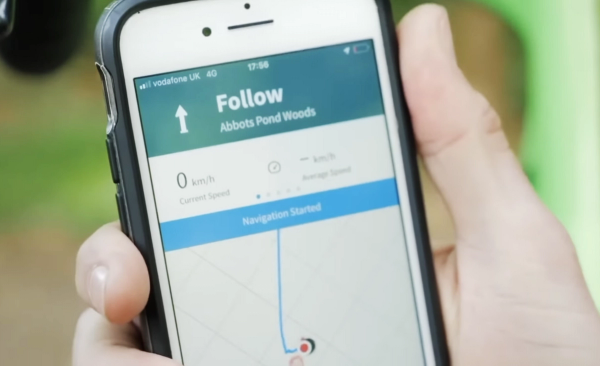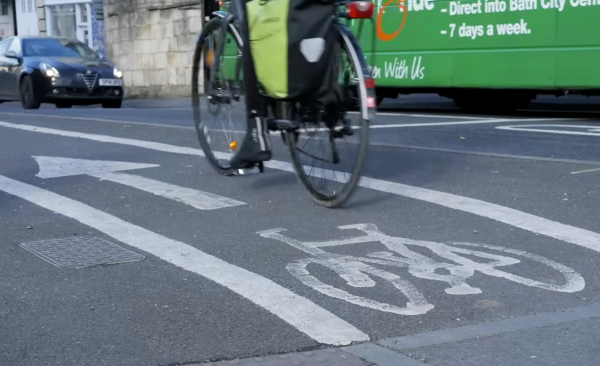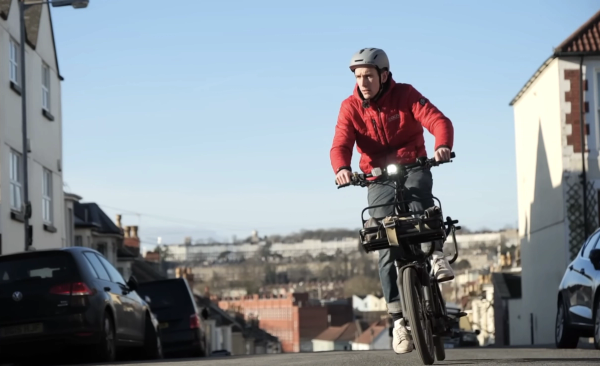How to ride in a city: Cycling tips for busy streets
Our advice for feeling confident, safe and in control while riding in an urban environment
Tom Hallam-Gravells
Online Production Editor
Cycling in a city can be daunting: there are cars everywhere, as well as busy junctions and complicated streets to navigate. It can sometimes feel more like Wacky Races than a bike ride!
But it doesn’t need to be a scary task. With a bit of practice and some regular riding, you can build up your city riding skill level and confidence. Here are our top cycling tips that will help you feel confident, safe and in control while riding in a city.
Read more: 5 basic skills for beginner cyclists

Check your bike
It’s hard to build riding confidence if you don’t have faith in your bike. So, make sure your bike is well maintained and in good working order. Here are a few things to check:
- Brakes - make sure that they can bring you to a safe stop.
- Tyre pressure - both tyres should be inflated to the correct pressure to ensure comfort and control, and to avoid punctures.
- Gears - make sure they shift smoothly and don’t slip. It can be very distracting if your gears aren’t shifting properly.
- Are there any other squeaks or rattles? Keeping a bike in tip-top shape will ensure that you won't get distracted or worried whilst riding.

Be seen
As the mantra goes: be safe, be seen!
Equip your bike with front and rear lights, especially in the winter, although it’s just as important in the summer if you’re going to be out in low light. It’s a good idea to keep the lights on your bike, that way you won’t forget them (but don’t forget to charge them!).
Why not add a bell to your bike too? OK, it may not be cool but it will ensure that pedestrians know and are aware of your presence. Being prepared and equipped will help to manage and mitigate against many of the hazards that a city can throw at you.

Ride with a buddy
One of the biggest fears when it comes to urban riding is the prospect of getting lost. It’s so easy to take a wrong turn, we’ve all done it.
So, why not ride with a colleague or a friend who knows where they’re going and follow them? That way, you can focus on yourself and your surroundings instead of directions. Plus, you’ll have someone to blame if you get lost!

Check directions
It's okay to stop if you get lost. After all, what’s the point in continuing to ride? You’ll probably just end up even more lost.
Pull over in a safe area and check the route and a map. Establish where you are and make sure you know exactly where you're going before you set off again.
Most importantly of all, keep your eyes on the road. Avoid fixating on a navigation app or something attached to your bars. It’s dangerous, especially when riding in busy urban areas.

Signal clearly
Make sure you clearly signal with your arms when turning or changing your position on the road. It tells other road users what you intend to do, helping to keep you safe.
Always signal clearly and in advance. You should also try to make eye contact with other road users, that way you know that they’ve seen you.
The simple process to follow when signalling is: check, signal, then manoeuvre. Try practising it on a quiet road to build up confidence before tackling busier roads.

Ride predictably
If a car acts erratically, it’s dangerous, right? It’s the same with cyclists, so don’t be erratic - try to ride predictably and smoothly. That way, other road users should know exactly what you're doing and they can judge and react accordingly.

Use cycle lanes
It’s usually best to use a cycle lane if one is available, and it’s recommended in the Highway Code. However, it’s perfectly safe to ride on most roads too when cycle lanes aren’t available or not up to scratch.
When riding on the road, don't ride too close to the gutter as that may encourage cars to overtake you too closely. That will leave you with nowhere to go to avoid hazards like parked cars or potholes. Ride a few feet away from the curb, or you may choose to move closer to the middle at points where the road narrows.

Be aware of blind spots
If a driver can’t see you, they can’t avoid you. So, try to avoid blind spots, especially around big vehicles like vans and lorries.
That’s one reason why you should never undertake, as the blind spots on bigger vehicles are huge and there’s a good chance that a driver won’t see you. Try to give larger vehicles plenty of space, making sure that you can see the driver and that they can see you. If it's safe and necessary to do so, try moving to the front of traffic on the outside.

Keep an eye on the road surface
From potholes bordering on craters to oily and slippery surfaces, most city roads aren’t the smooth tarmac we all dream of. So, always keep an eye on the road surface so you’re prepared for any surprises.
Roads in cities tend to be quite oily and slippery, especially in wet conditions. When you're riding in wet conditions, make sure you avoid the white and yellow lines, especially when cornering. These tend to have very little grip. Some cities have them, some don't, but tram lines can also be dangerous, especially if you get your wheel caught in one. Many riders have learnt this the hard way! If you cross paths with a tram line, ride at an angle or bunnyhop it if you can.
The last thing to be aware of is manhole covers. Again, these can be particularly slippery in the wet. They’re not always avoidable, but you should be fine as long as you don’t brake while riding over one.

Don't compete with other cyclists
It’s something many of us have done. There are lots of bikes around you and that competitive spirit takes over. Before you know it, you’re racing other commuters.
Leave any racing for another time. Not only will you arrive at your destination sweaty but it can also be dangerous, especially if you cut other cyclists up in the process. Enjoy your commute and use it as a time for relaxation instead of maxing out your heart rate.
There you have it, our top tips for staying safe while riding in a city. Take some of these on board, and hopefully you’ll start feeling more confident on your commute or during urban sections of your rides. Remember, have fun while riding and, most importantly of all, stay safe.
.jpg?rect=957,780,3097,3060&w=600&auto=format)

.jpg?w=600&auto=format)








